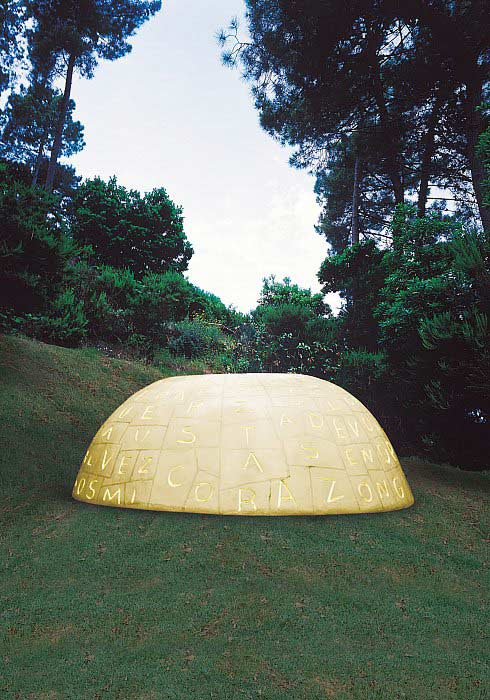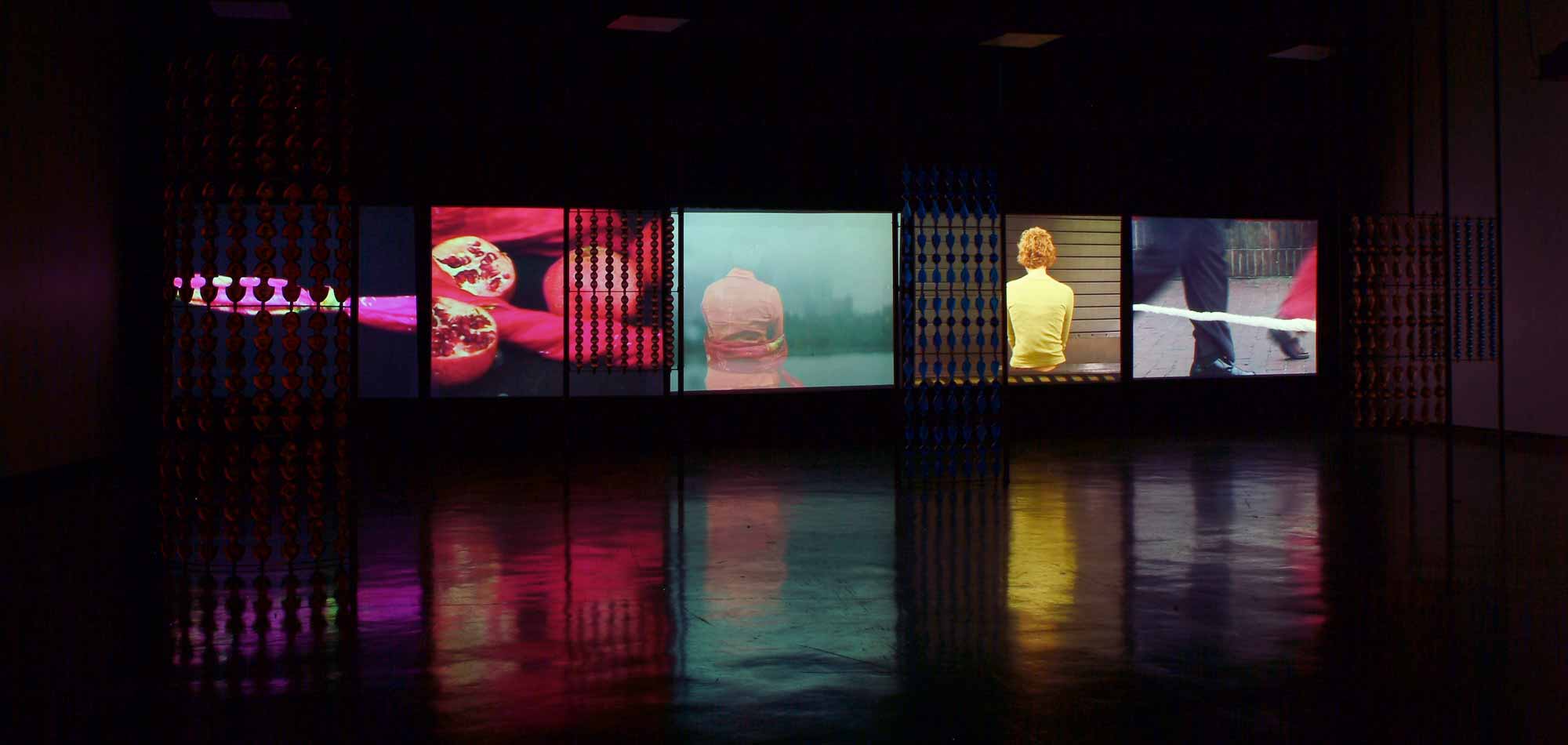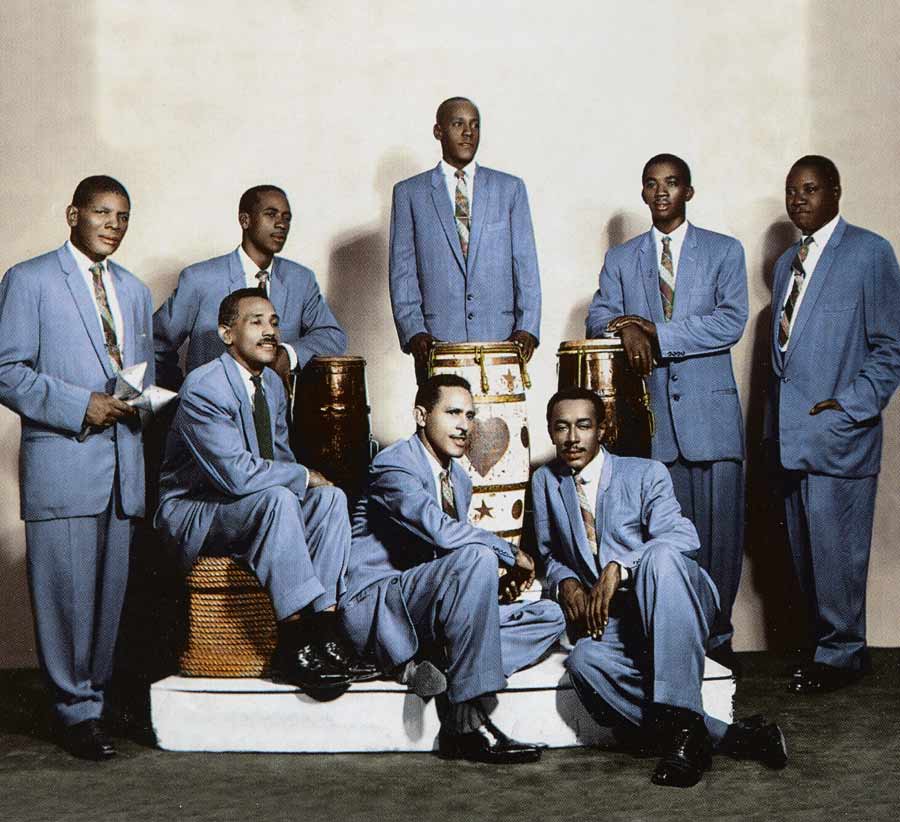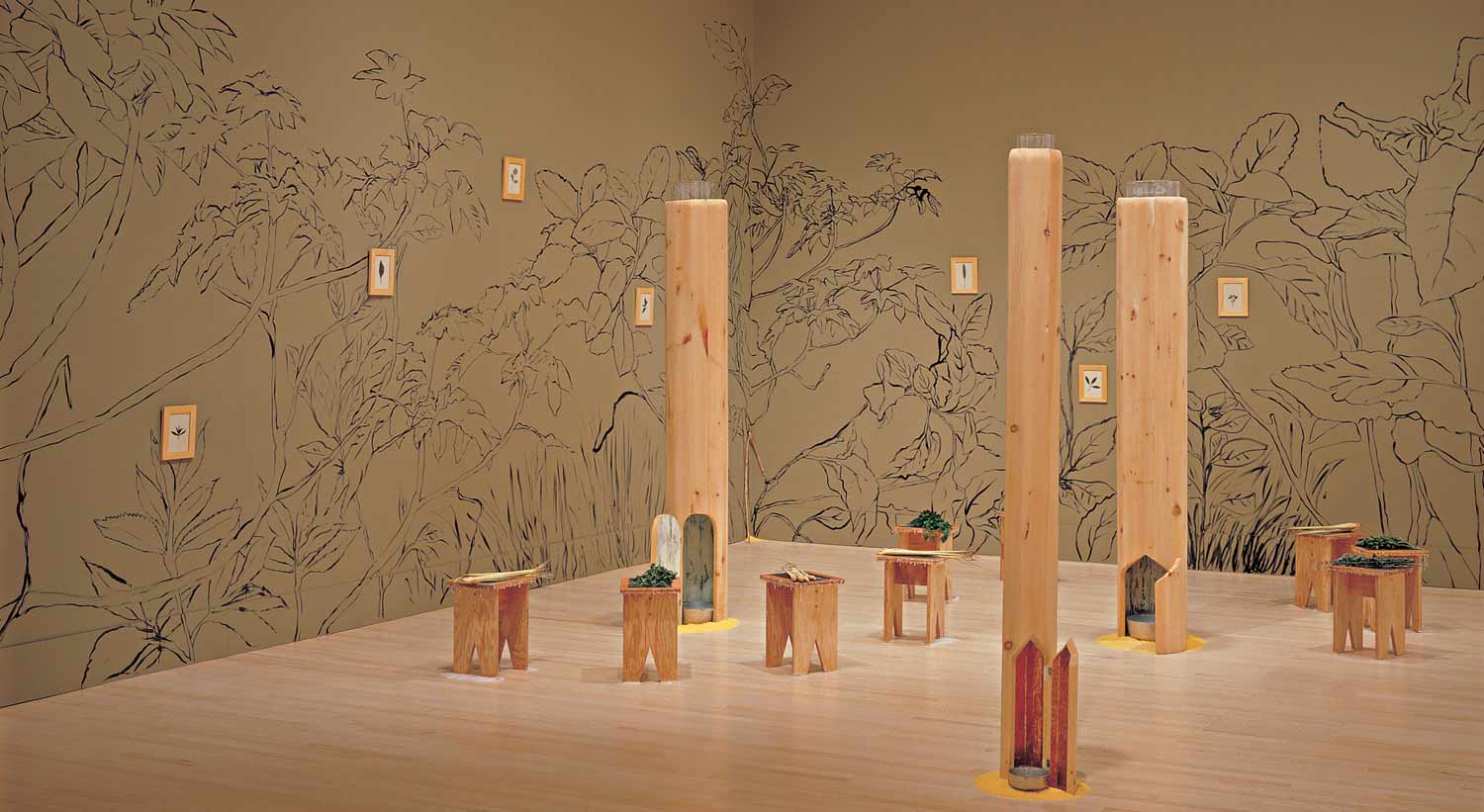A friend suggested Leonard, who worked in the college's media lab and made electronic soundscapes. He had already visited Cuba and owned an impressive collection of Cuban recordings. "Back then, I had no idea I would end up using them for a project lasting several decades," he said of the dozens of albums he had brought home. "But to me, they seemed far more valuable than cigars."
Campos-Pons showed him her sketchbook, containing images of the scenes she intended to enact. Then she went off to film and he went off to compose. "When he played the first sample of what he had done for me, I was mesmerized," she said.
His composition for her film used a kaleidoscope of sounds to evoke religious devotion, including flowing water, bells, percussion played on a synthesizer, and samples ranging from avant-garde jazz to the guitar of Jimi Hendrix. "I call him the bastard child of John Cage," said Campos-Pons with a smile, referring to the experimental twentieth-century composer.
Since then, Leonard has created sound accompaniments for many of Campos-Pons's artworks. While their backgrounds could not be more different—she the descendant of Cuban slaves from Nigeria, he a Protestant from white suburban Philadelphia—part of their success as collaborators lies in their overlapping talents. She knows music and was a gifted oboist in her youth. He, before discovering electronic music, was a visual artist. (Early in their friendship, he took an extraordinary photograph of her feet, with white crosses painted on their soles.)
"There are things that Magda can't get at through the visual," said Leonard, who holds a master's degree from Boston's New England Conservatory of Music and is Artistic Director of the Interdisciplinary Arts Institute at Boston's Berklee College of Music. "I find what she can't do, and I fill that with music."
Figure 1 | Interiority (or Hill-Sided Moon), detail, 2003, translucent polymer, La Marrana Arte Ambientale, Italy. Shown as installed at La Marrana Arte Ambientale, Italy. Courtesy of La Marrana Arte.
Their collaborations have taken them around the world. In 2003, they created a permanent installation called Interiority (or Hill-Sided Moon) on a hilltop in La Spezia, Italy, a work designed to be experienced at night (Figure 1). Projected from orbs, Leonard's delicate guitar music suggests the playing of a lyre. The following year, Leonard and Campos-Pons created the multimedia installation Threads of Memory in an abandoned textile mill in Dakar, Senegal. For that location, Leonard's soundscape resonated with repeating rhythms that echoed the sound of looms (Figure 2).




